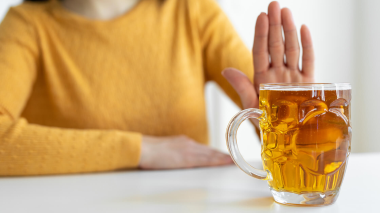Lymphedema refers to the painful swelling, inflammation and tissue-thickening under the skin that occurs in a specific area, generally one of your arms or legs. It’s most commonly caused by the removal of, or damage to, your lymph nodes or vessels as a part of cancer treatment. However, lymphedema can also be present at birth, though symptoms may not occur until later in life.
Lymphedema results from a blockage in your lymphatic system, which is part of your immune system. The blockage prevents lymph fluid from draining well, and the fluid buildup leads to swelling.
Possible signs of lymphedema include swelling, itching or a burning feeling in an arm or leg; thickening of the skin; or a feeling of tightness when wearing clothing, shoes, rings, etc.
Who develops lymphedema?
The condition can develop quickly within a few days following surgery, or gradually over weeks, months or even years after treatment. Your lymphedema risk increases if you:
- Have undergone breast cancer treatment that involves radiation therapy or removing lymph nodes
- Had lymph nodes removed in the underarm, groin or pelvic areas
- Had radiation therapy to the underarm, groin, pelvic or neck areas
- Have scar tissue in lymphatic ducts or veins under your collarbone
- Have cancer that’s spread to lymph nodes in your neck, chest, underarm, pelvis or abdomen
- Have pelvic or abdominal tumors that place pressure on lymph vessels or ducts
“There's no cure for lymphedema and it is in fact a chronic condition,” said Dr. Nilanjan Ghosh, MD, PhD, lymphoma program director at Carolinas HealthCare System’s
Levine Cancer Institute. “However, lymphedema can be managed with early diagnosis and various methods to control the swelling, so patients can continue to thrive.”
What can you do?
"Once lymphedema occurs, patients may frequently experience painful swelling, but there are many effective therapies that can be used to manage the condition,” said Dr. Ghosh.
Take these precautions to help you cope with lymphedema:
- Keep the area elevated. Whenever possible, raise the affected arm or leg above your heart to prevent blood from collecting in your limb’s lower portions.
- Wear loose-fitting clothes and accessories. Avoid tight elastic bands, socks, shoes and jewelry.
- Exercise regularly and gently. Physical activity can improve lymphatic drainage. Follow your physician’s advice regarding specific hand, arm, foot or leg exercises.
- Protect your affected limb. Use your other arm for carrying bags, having blood drawn or getting blood pressure checks. Don’t sit in one position for more than 30 minutes, and avoid crossing your legs.
- Guard against injuries, burns and infections. Wear gloves when gardening, cooking and performing other chores. Use an electric razor for shaving. Wear shoes outdoors. Treat any cuts or scrapes promptly by washing them with soap and water, and applying an antibacterial ointment and bandage. Call your healthcare provider immediately if you have signs of infection like redness, pain, heat, swelling and fever.
- Avoid extreme temperatures. Stay out of hot tubs and saunas and avoid using heating pads or ice packs.
- Protect your skin. Clean your skin gently and moisturize regularly. Use a sunscreen with an SPF of at least 15.
- Wear compression garments. Get fitted for these special garments or sleeves that help prevent swelling and lymphedema.
- Ask about treatment options. You may find relief by treating the underlying condition causing the lymphedema. Your healthcare provider may suggest supportive measures such as a specialized physical therapy program, manual lymphatic drainage, which uses mild massage to help move fluid from the limb to your body’s trunk; or complex decongestive therapy, which combines massage, compression wrapping, exercise and skin care.



